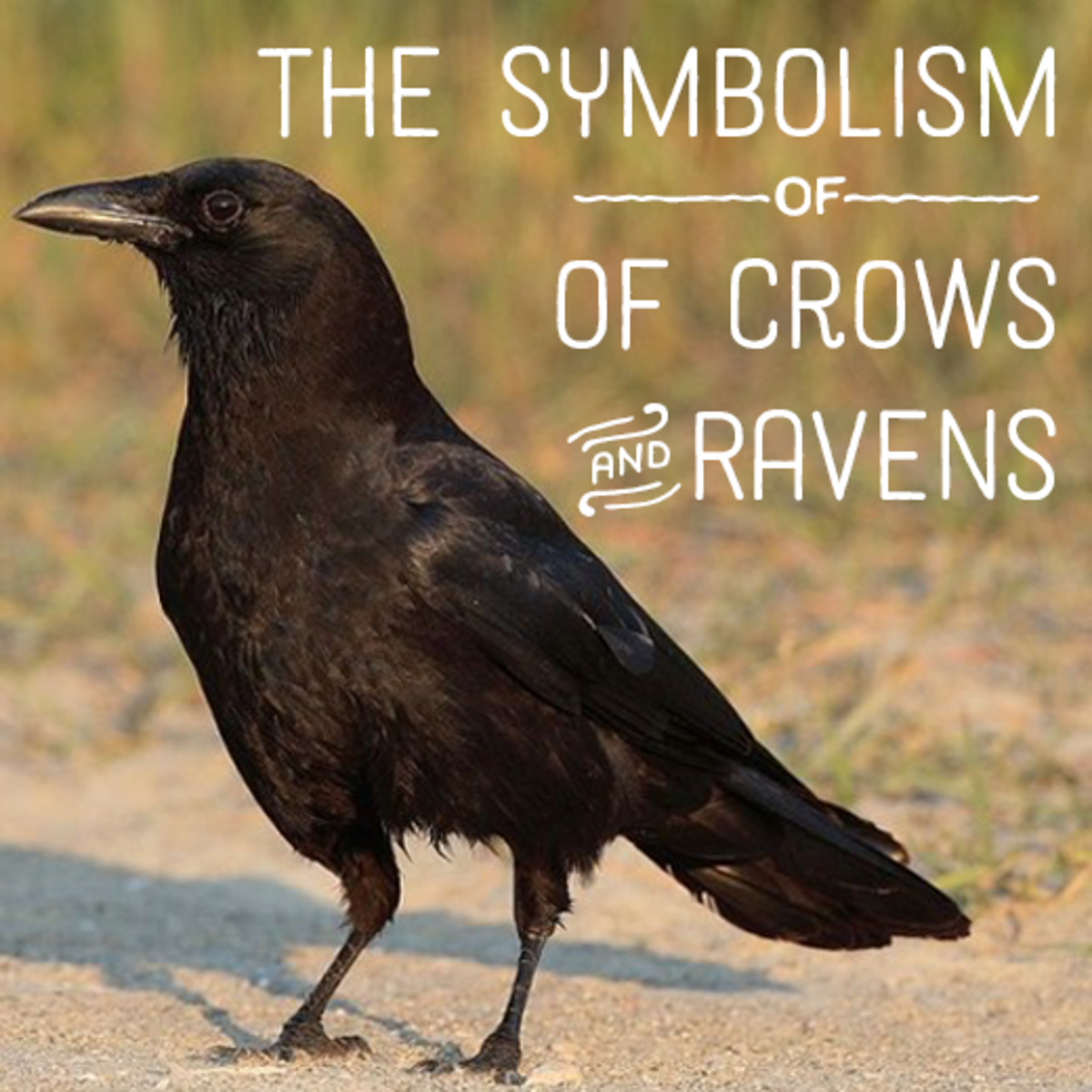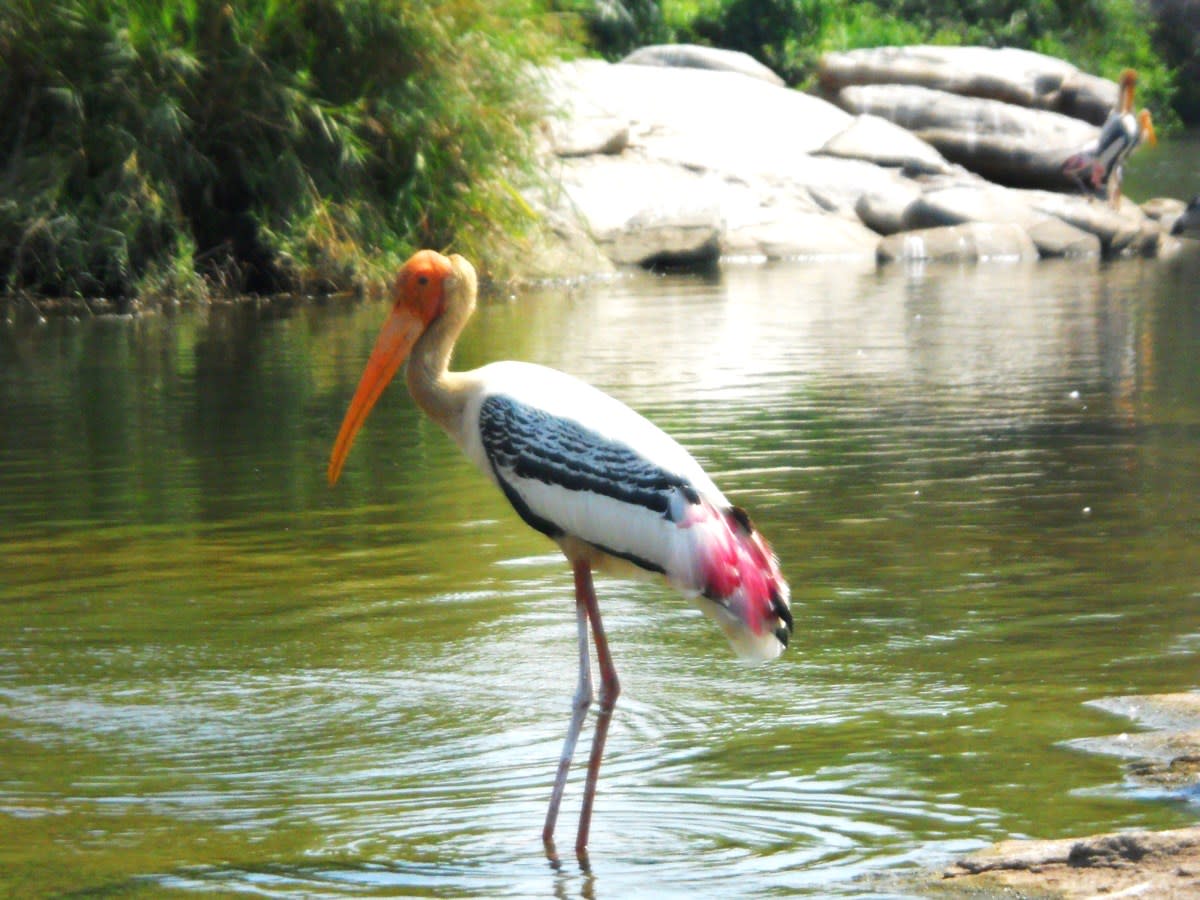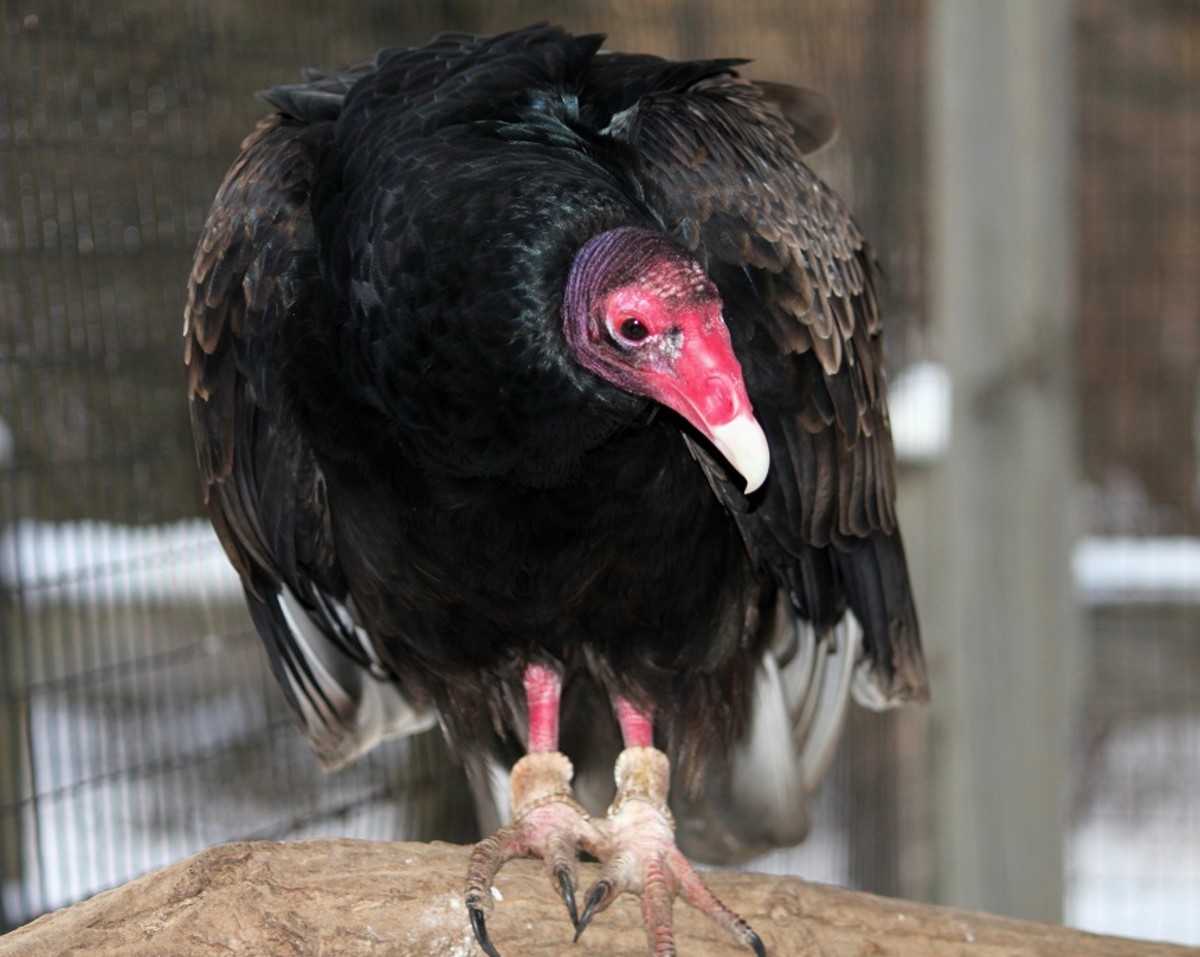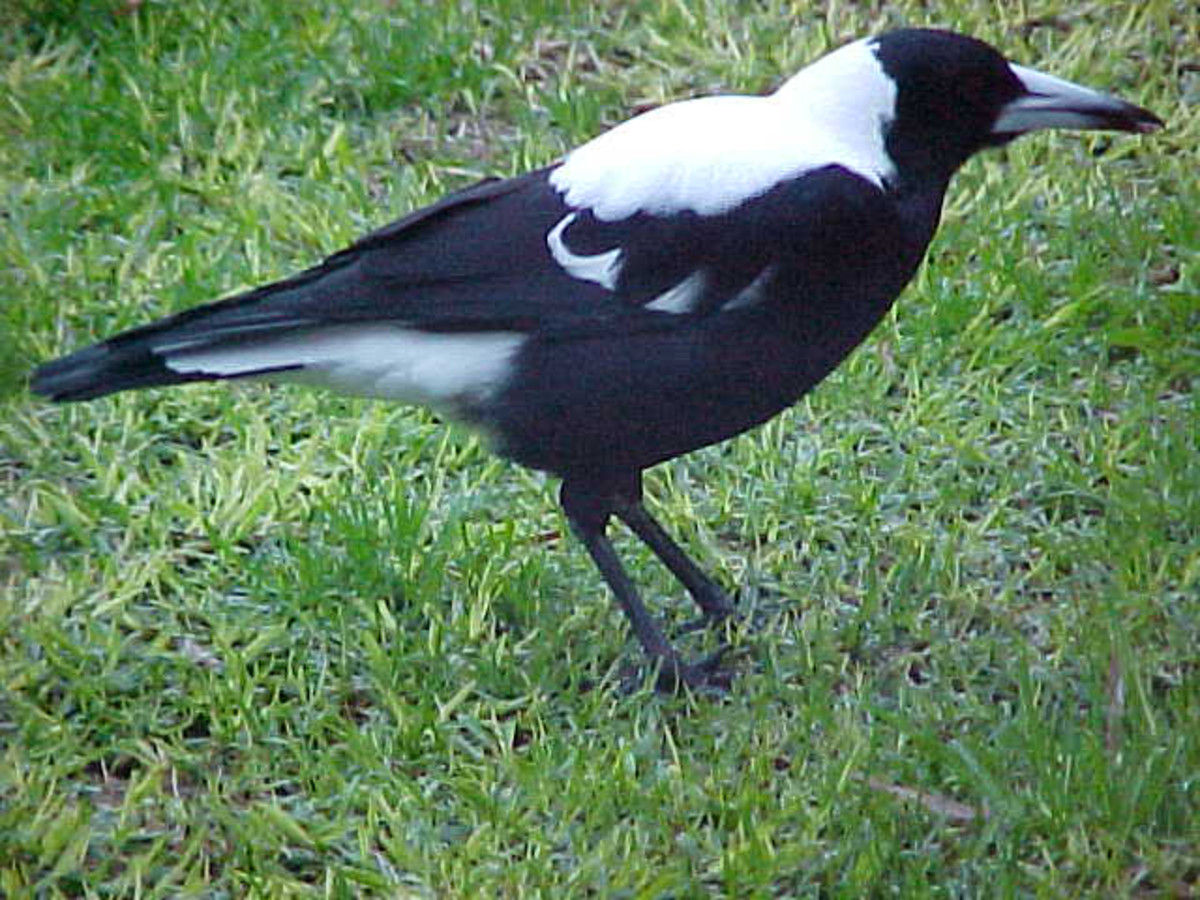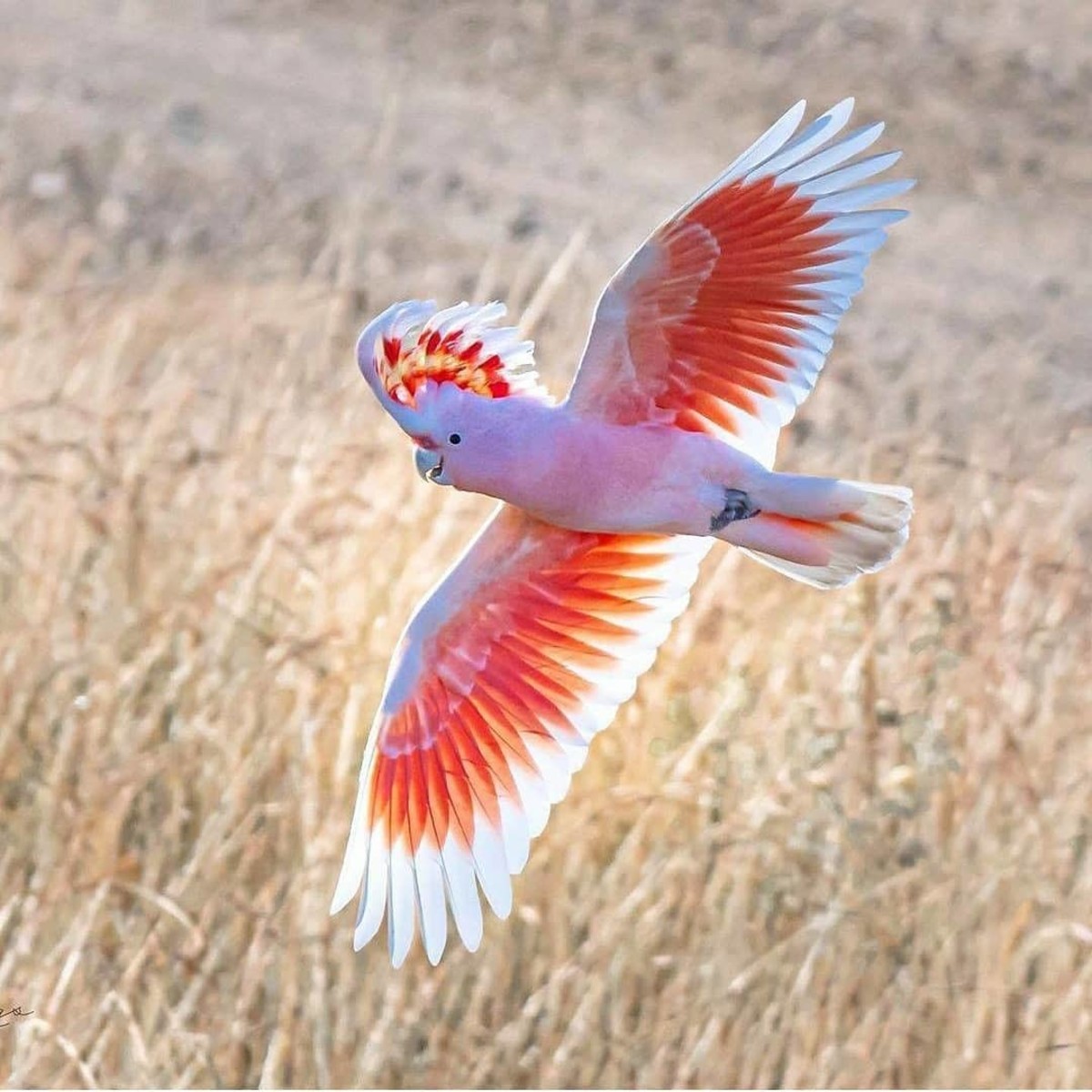Crow the Most Intelligent of all Birds.

Crows are Actually Harmless Birds,
Believed to be the cleverest of all birds, the Crow belongs to the Corvidae family. Crows are normally smaller in size than and not as thick-billed as ravens, which belong to the same genus.
Crows are highly intelligent, they can be masterful mimics. Admired as well as feared crows are actually harmless birds that have quite unwittingly been associated with negative qualities.
An assembly of crows are called "a flock or murder," although this expression usually appears in poetry rather than scientific. Some people have accepted crows as pets.
A crow may live up to 13 years in natural living and more than 20 years in captivity. They habitually eat other birds' eggs and nestlings and grain, but also destroyed several destructive insects and rodents.
In the winter these birds get together at night some in as many as eight thousand or more in communal roosts. They can be easily controlled and learned to mimic some human sounds.
Photo Credit: flickr
Crow - The Intelligent Bird
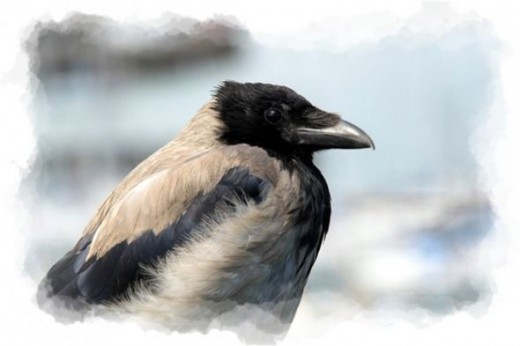
Photo Credit: Christine Matthews © Copyright. Licensed for reuse under the Creative Commons Licence.
Crow bird eat everything - from worms and bugs to mice and berries to rotten food and hard nuts. An adult crow needs 11 ounces of feed a day and has been given the name of harming/damaging crops.
This is far from the reality as crows will often eat destructive insects thus benefiting the crop. Crows are monogamous species, with lifelong relationships.
The younger members of the crow family help the parents raise new kids. Young crows do not have babies until they are at least two years old.
The female crow lays a bunch of 4 to 6 eggs which her mate also takes rotation in hatching. All the members of the family unit help in looking after the little brood.
In fact, even prior to the young are hatched, the juveniles from past years and their parent group nesting stuff together. Then the mother to be crow put together this material into a soft nest for herself.
Very caring, social and more or less pillars of bird society, crows guard and protect not own family but they will also dash to the aid of unrelated crows in call for or distress. Mating for life, a crow's strongly knit family unit speaks volumes about its shrewdness and sense of camaraderie.
In spring and summer, they have a propensity to stay with their family but in winter and fall the family assemblage join large aggregations that can contain thousands of crows. Crows have particularly good memories, "A crow never forgets", mainly when it comes to something to be feared.
But there is extra to crows than just this. Scientists have revealed that these birds can make complicated tools! And they can even fine-tune their designs!
The tools that are typically used to dig food out of crevices come in various shapes, wide, narrow, or tapered with a ragged edge. And the kind of tool the crow picks depends on what purpose it is going to be put.
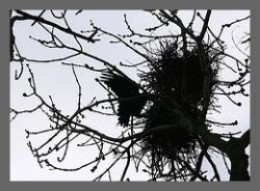
Crow's Nest
Crows build their nests in woods or inaccessible trees at least sixty feet above ground. The nests are firmly built of branches and twigs, and are lined with bark, plant fibers, mosses, twine, and other found resources.
Whereas crows have young in the nest and on the ground learning to fly, they may protect adjoining territory by dive-bombing other animals and people. If possible, it is best to stay away from nesting areas until the young have fledged and the parents are no longer as shielding.
Binos For Bird Watching




The Roost
One of the amazing bird related miracles is the flock of large numbers of birds into a single group to sleep together. These kind of sleeping groups are known as "roosts". Roosts are primarily a fall and winter thing for the crows.
The roost population is highest in winter and then decline near the beginning of the breeding season. Generally breeding crows sleep on their areas during the breeding season, but join the roosts afterward.
Crows congregate in such large groups are still largely a matter of assumption. A number of theories have been constructed to explain it.
One of the ideas is that the crows get some protection from predators by being in a large group, safety in numbers. Crows are most scared of large owls, and sleeping with a group of other crows could offer some safety for an individual crow.
Crow Bird - Identification:
Approximately 40 or so Corvus pecies are known as crows, and the name has been applied to other, unrelated birds. Entirely dependent on human habitation; therefore crows are found in villages, towns, and cities throughout its range.
Both male and female crows have totally black plumage, bills, legs, feet and claws. The body plumage and wings have a violet iridescence in bright light.
Crow's body weight is about a pound with a body length from 15'' to 21" and a wingspan up to 36". Its flying speed is about 30 mph with short bursts it can attain 60 mph.
Their eyesight is like to a wild turkey - just make a move and sees what happens. Their hearing is excellent.
Pet Crow Talking - Vid
Corvidae Family
Corvidae is a cosmopolitan family of oscine passerine birds that includes the crows, ravens, rooks, jackdaws, jays, magpies, treepies, choughs and nutcrackers. The familiar English name applied is corvids or the crow family, and there are over 120 species. The genus Corvus, together with the crows and ravens, makes up above a third of the entire family.They are (crows)measured the most intelligent of the bird having confirmed self-awareness in mirror tests and tool making ability.

Crows and Raven birds
Crows and Raven birds, even though in the same genus are dissimilar birds. (Think of leopards and tigers; these two are in the genus Panthera, and are visibly related, but they are quite dissimilar animals.)
The words "crow" and "raven" themselves have modest or no real taxonomic connotation. That is, the Australian "ravens" are further directly related to the Australian "crows" than they are to the Ordinary Raven.
In general, the largest black species, generally with hairy throat feathers, are called ravens and the minor species are considered crows. More delicate characters include: ravens fly rise more than crows. If you see a "crow" soaring for more than a few seconds, confirm it a second time.
Crows not at all do the somersault while flying that common Ravens often do.
Photo: from wikipedia under creative common license.
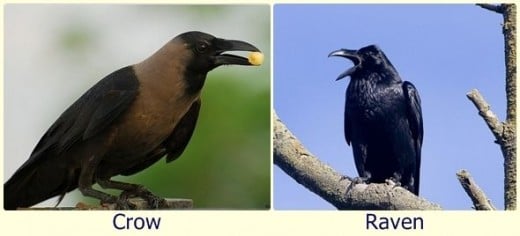
Ravens are longer necked while flying than crows. The larger bill of the raven can be seen in flight, but it is really less evident than the long neck. Raven wings are shaped differently than are crow wings, with longer primaries ("fingers") with more opening between them. You can see through the wings of the Ravens." The longer primaries make the wings appear more curved at the wrist than a crow as the bird flies, and the "hand" section can look nearly pointed.

The Rooks
Rooks are eminent from parallel members of the crow family by the exposed grey-white skin around the base of the adult's bill in front of the eyes. The feathering round the legs, also seem shaggier and laxer than the congeneric Carrion Crow.
The juvenile is apparently more similar to the Crow because it lacks the stripped patch at the base of the bill, but it loses the facial feathers later than six months.
Photo: from wikipedia under creative common license.

The Jackdaw
The Jackdaw is the smallest species in the Genus Corvus, measuring 34-39 cm (14-15 in). Most of the plumage is black or greyish black excluding the cheeks, nape and neck, which are soft grey to greyish silver.
The iris of adult jackdaw is greyish white or silvery white, the only member of the genus outside of the Australasian area to have this feature. The iris of young jackdaws is light blue. In flight, jackdaws are distinguishable from other corvids by their smaller size, faster and deeper wing-beats and proportionately narrower and fewer fingered wings.
They also have a shorter, thicker neck, a lot shorter bill and commonly fly in tighter flocks. Under wings are evenly grey, unlike choughs. On the ground, jackdaws march about briskly and have an upright stance.

Crested Jay
The Crested Jay (Platylophus galericulatus) is a class of bird in the Corvidae family. It is monotypic inside the genus Platylophus.
It is also originate in Brunei, Indonesia, Malaysia, Myanmar, and Thailand. Its natural-habitations are subtropical or tropical moist lowland forests and subtropical or tropical moist mountains. It is endangered by the habitat loss.
Photo: from wikipedia under creative commons license.
How can we get rid of Crows from our Yard?
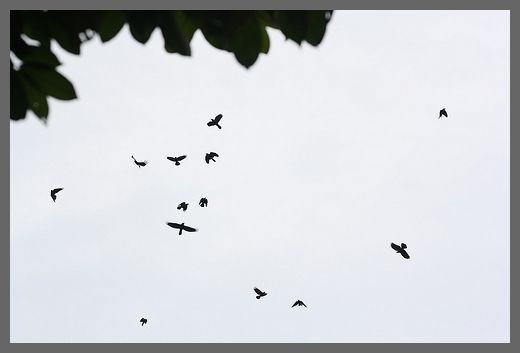
Photo Source: flickr under creative commons lisence.
First you must understand the crows are not evil, and they are not intentionally trying to torture you. They are only being crows, trying to live their lives and trying to feed their families.
Actual property devastation is one thing that might need action, but just being irritating is something else. Try to be grateful for the crows for the interesting birds they are. If you get over that barrier, the frustrating habits (you suppose) become much less annoying.
They do many things that may be annoy you, but love them and be willing to overlook (most) of the annoying things because the relationship is primarily affirmative on the whole. Once the crows have determined to come to your yard, it might be tough to persuade them to leave.
Plastic owl trap will work, for at least 15 minutes. A dog could be more helpful, especially if it was encouraged to run after them. However, if something really special was inviting the crows to your yard (with readily available food), the crows perhaps would figure a way (how to get it and avoid the dog).
The idea is to make the yard an unpleasant place for the crows. Cut down your branches of trees, if you have to. Chase them when possible and make it clear that you are after them, not just going out in the yard for new reasons (it will make a difference).
Killing the crows is not a suggested option. It can be done with authorization only in a few areas. But, if one family of crows found your yard wanted, probability are others will too.
How to Get Rid of Crows - Vid
Some Myths about Crows
Indian Myths: In Hinduism, particularly in Tamil Nadu, it is supposed that people who expired will take food and offerings through the crows called " kakka". Each and every year people whose ancestors or relatives died will offer food to crows as well as cows on the Shraddha day. A fight between crows and owls is said to have enthused the final bloody night of the Mahabharatha war.
Chinese myth: They supposed that the world at one time had 10 suns that were caused by 10 crows. The effect was overwhelming to the crops and nature, so they sent in their supreme archer Houyi to shoot down 9 crows and spare only one.
Also Chinese people believe that crows indicate bad luck, perhaps due to the color black (black is the color linked with bad luck in china, the color of mourning). Having a "crow beak" is a figurative expression that one is being a curse.
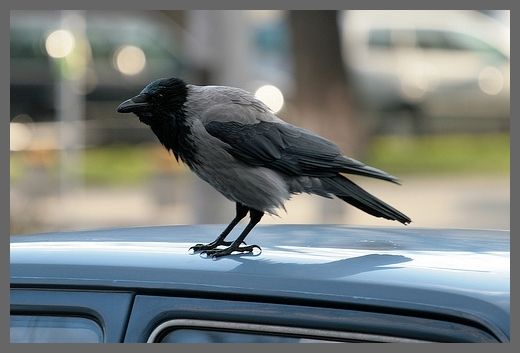
Photo Credit: Flickr under creative common license.
Crow Intelligence - Vid

Bird Watching
Your Lifetime Ticket to The Theater of Nature
A large number of people all over the world enjoy birding or bird watching. Bird watching is a very enjoyable and relaxing hobby that almost anybody can start doing.
The basic categorization of bird watching is the study of birds either with the help of binoculars or just using your naked eyes. Lots of people who take part in bird watching also like the sounds created by the birds and can often recognize the bird from the sounds they make, ahead of even seeing the bird. To identify a bird, we will often hear it first.
Also know about the good birding spots in nearby areas. Bluebirds are a venerable favorite of bird watchers so source some bluebird house plans and make a house to attract these birds to your garden.
Birds are interesting, colorful, lively, sweet to listen to and quite easy to attract to our gardens. There are many basic clues that allow you effectively identify the bird; bird's silhouette, its plumage & coloration, behavior, its habitat, and its voice.
On occasion, the key to identification is, simply knowing which clue to look for first when you see a strange bird. As your birding capability increase, you will be able to identify the important clues with greater ease and confidence.
Bird watching does not need a lot of equipments; just a good pair of binoculars and a field guide that helps identifies the bird.
Book For Bird Watching

Ravens vs Crows - Vid - Physical differences between a raven and a crow



